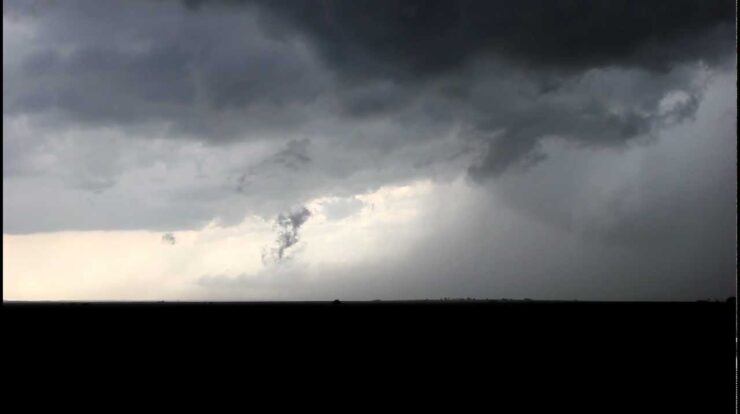
The Blair Tornado, a cataclysmic event that left an indelible mark on the community, serves as a sobering reminder of the destructive power of nature and the resilience of the human spirit. This comprehensive exploration delves into the meteorological conditions that fueled the tornado’s formation, the extent of the damage it inflicted, and the scientific insights gained in its aftermath.
As the tornado’s fury unfolded, eyewitness accounts paint a vivid picture of the devastation it wrought, while scientific analysis provides a deeper understanding of the complex interplay of wind shear, instability, and moisture that gave rise to this monstrous weather phenomenon.
Overview of the Blair Tornado

The Blair tornado, a devastating EF4 tornado, touched down near Blair, Nebraska, on June 16, 2014. With wind speeds reaching up to 170 mph, the tornado carved a path of destruction over 10 miles long and half a mile wide, leaving behind a trail of shattered homes, businesses, and infrastructure.
Eyewitness accounts described the tornado as a “freight train” tearing through the landscape, lifting houses off their foundations and sending debris flying through the air. The tornado claimed the lives of one person and injured dozens more, causing widespread damage and leaving a lasting impact on the community.
Meteorological Conditions Leading to the Tornado
The Blair tornado formed within a supercell thunderstorm characterized by intense updrafts and a rotating updraft known as a mesocyclone. The storm developed in an environment favorable for tornado formation, with ample wind shear, instability, and moisture.
The strong wind shear, the difference in wind speed and direction at different altitudes, provided the rotation necessary for the formation of the tornado. The instability, caused by warm, moist air rising rapidly, provided the energy that fueled the storm.
A detailed meteorological analysis of the tornado’s life cycle revealed that it passed through several stages, including the formation of a condensation funnel, a visible tornado, and finally a dissipating stage.
Damage Assessment and Recovery Efforts
The Blair tornado caused significant damage, destroying or heavily damaging over 200 homes and businesses. The tornado also downed power lines, uprooted trees, and damaged infrastructure, including roads and bridges.
Emergency services and the community responded quickly to the disaster, providing immediate assistance to victims and coordinating recovery efforts. Volunteers from across the region joined forces to help with cleanup and rebuilding.
The resilience and support shown by the Blair community in the aftermath of the tornado were remarkable, as people came together to help their neighbors and rebuild their lives.
Scientific Research and Lessons Learned
The Blair tornado became a subject of extensive scientific research, with meteorologists studying its behavior to improve forecasting techniques and enhance tornado safety measures.
Key lessons learned from the tornado include the importance of early warning systems, the need for better communication during severe weather events, and the value of community preparedness.
Ongoing research in tornado science continues to explore the complex processes involved in tornado formation and behavior, with the aim of improving prediction and mitigation strategies.
Historical Significance and Cultural Impact, Blair tornado
The Blair tornado holds historical significance as a major weather event that left a lasting mark on the region. The tornado’s impact was widely reported in the media, and its story has been told in documentaries, books, and articles.
The tornado has also had a cultural impact, becoming a part of the collective memory and identity of the Blair community. The tornado’s story is shared in local museums, historical accounts, and community gatherings, serving as a reminder of the community’s resilience and the importance of disaster preparedness.
Final Wrap-Up: Blair Tornado
The Blair Tornado has left a lasting legacy, not only in terms of the physical scars it inflicted but also in the scientific knowledge it has imparted. The lessons learned from this catastrophic event have informed tornado safety measures and preparedness strategies, while ongoing research continues to unravel the mysteries surrounding these awe-inspiring and destructive forces of nature.
Questions and Answers
What was the magnitude of the Blair Tornado?
The Blair Tornado was an EF4 tornado with wind speeds reaching up to 165 mph.
What were the key factors that contributed to the formation of the Blair Tornado?
A combination of strong wind shear, atmospheric instability, and ample moisture created the ideal conditions for the tornado’s development.
What lessons were learned from the Blair Tornado?
The tornado highlighted the importance of early warning systems, robust building codes, and community preparedness plans in mitigating the impact of future tornadoes.






